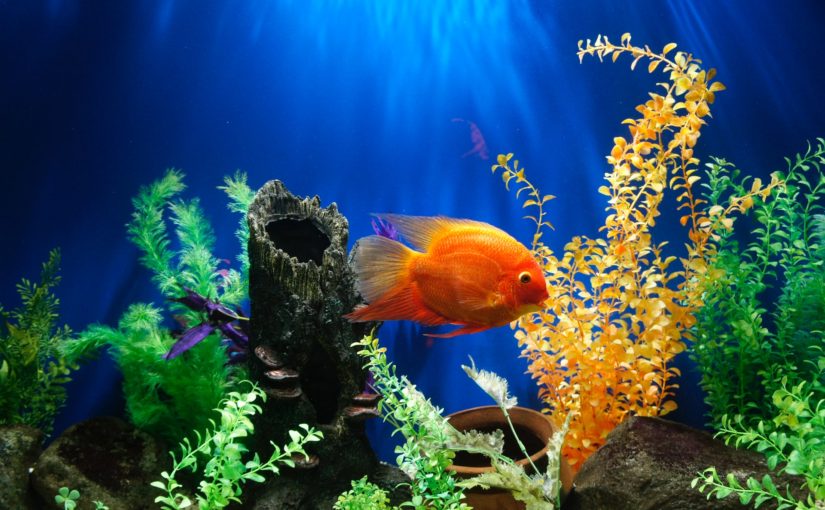Roughly 13 million households in the US own a pet fish, statistics from the Insurance Information Institute reveal. Aquaponic tanks are one of the most eco-friendly homes you can make for your fish. They have a symbiotic relationship with plants growing on top of the tank; the two organisms rely on each other to survive and thrive. Aquaponics is an enjoyable and rewarding way to keep fish with some truly fascinating science behind it.
What is aquaponics?
Aquaponics is a fusion between hydroponics, which is a method of growing plants without soil, and aquaculture, or fish rearing. It combines both these elements to create a clever closed-loop and self-sustaining ecosystem. The fish create waste, which bacteria converts into nutrients for the plants to use as sustenance. In turn, the plants clean the water for the fish. All you need to do is regularly feed your fish and make sure the tank conditions are safe and healthy (which includes aspects like the water levels and temperature and pH level).
The science behind aquaponics
Aquaponic tanks run through several steps to ensure both fish and plants stay healthy and alive. The first step in the process is ammonification: the fish expel their metabolic waste in the form of ammonia (which is why they’re known as ammonotelic organisms). However, ammonia is also toxic to fish if it’s left to accumulate in the body or their environment. Fortunately, the tank pump removes the waste and funnels it to the plants growing above. The nitrogen cycle is the next essential step performed with the help of beneficial bacteria (nitrobacter, nitrosomonas, and nitrospira) found in the plant beds and soilless grow media. Plants can’t absorb ammonia, but the beneficial bacteria is able to consume it and convert it into nitrates. The plants then use the converted nitrates to grow and perform photosynthesis.
In turn, the plants work as a bio-filtration system with their roots cleaning the tank’s water. The water is also filtered by the soilless grow media as it passes through the beds. As a result, the water usually remains clean enough for the fish to survive without changing it. However, you may find you do need to sometimes change the water manually. Healthy circulation and oxygen levels are usually maintained with the help of air pumps or air stones. Aquaponic tanks can also provide a small amount of oxygen thanks to gravity — when the water flows between the plants back down to the tank, it naturally mixes with air.
Keeping the tank eco-friendly
Aquaponic tanks are highly eco-friendly systems. However, choosing energy-efficient heating and lighting options can make the tank as sustainable as possible. For example, LED lights are an energy-efficient option — they use 80% less electricity than other aquarium lights. In fact, you’ll make back the cost of your LED lights within one year to 18 months thanks to the energy savings. Energy waste can also be prevented by selecting a heater or chiller that suits the size of the tank. Positioning the tank away from windows can further prevent heat loss, specially if you live in a cold climate. It’s also a good idea to choose a tank no larger than you really need. For example, a 5-10 gallon tank is the ideal size for two fish. Larger tanks inevitably end up requiring more energy to maintain.
Aquaponic fish tanks are an eco-friendly and enjoyable way to keep fish. They’re also low maintenance and an easy way to grow your favorite edible leaves at the same time.
